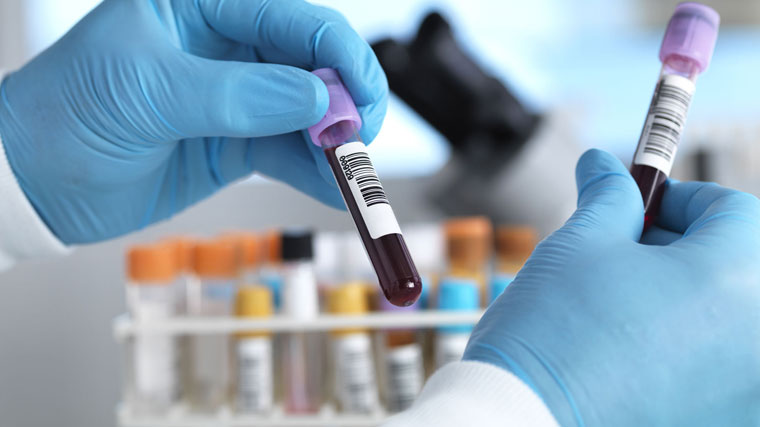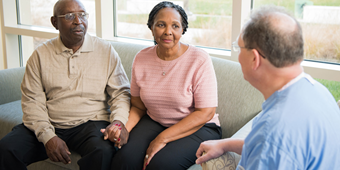Anemia: A Transportation Breakdown

Find Your Perfect Match
Answer a few questions and we'll provide you with a list of primary care providers that best fit your needs.
One of the most important tasks your blood performs is delivering fresh oxygen to nourish all the cells and tissues of your body. But if you have anemia, your blood does not carry enough oxygen. It’s the most common blood disorder, affecting more than three million Americans.
How Does Anemia Develop?
Your blood’s oxygen-delivery system relies on red blood cells (RBCs), which make up 40 percent of your blood volume. RBCs contain hemoglobin, a protein that gives blood its characteristic red color. Each time you inhale, you draw fresh oxygen molecules into your body. The oxygen passes through your lungs and into your bloodstream, where it attaches to the hemoglobin in your RBCs and heads out through your blood vessels for delivery.
After the hemoglobin distributes its cargo of oxygen, it picks up waste gasses, such as carbon dioxide, and carries them back to your lungs, where they’re expelled in your exhaled breath.
Anemia is a breakdown in this sophisticated transportation system, resulting in your body not getting enough oxygen. It occurs for one of three reasons:
- Your body doesn’t produce enough red blood cells
- Your body loses more red blood cells (usually by bleeding) than it can produce. This can occur through a slow blood loss, like a gastrointestinal bleed or a bleeding ulcer, which you may not realize is occurring. It also occurs in women who have heavy menstrual cycles, and sometimes during pregnancy if the body doesn’t produce enough blood volume. Iron deficiency anemia, the most common type of anemia, can result in these situations.
- Your body destroys your red blood cells. Sickle cell anemia and thalassemia are two disorders that can cause this to occur.
What Are the Symptoms Of Anemia?
It’s possible to have anemia without obvious signs, but most people show symptoms, from mild to severe, including:
- Weakness and fatigue
- Paleness
- Feeling dizzy or fainting
- Having a rapid heartbeat
- Shortness of breath
- Difficulty doing normal activities
- Jaundice (yellowing of your eyes, skin, or mouth, and having dark urine)
- Cold hands or feet
Anemia’s Risk Factors
Your risk of developing anemia is increased in the following situations:
- You have certain chronic conditions such as diabetes, rheumatoid arthritis or other autoimmune disease, cancer, kidney disease, liver disease, thyroid disease, or inflammatory bowel disease (Crohn’s disease or ulcerative colitis
- You have a chronic infection such as tuberculosis or HIV
- You’ve been exposed to certain medicines, such as those used for chemotherapy
- Your diet doesn’t include enough iron, folate (folic acid), or B12
- You have aplastic anemia, a rare bone marrow disorder, or a genetic condition such as sickle cell disease or thalassemia
Your risk of becoming anemic also increases as you age. As you get older, a yearly physical, including bloodwork, is important because that’s often how it is discovered that someone is anemic. If it is found that you’re anemic because you’re losing blood, your doctor will investigate further to find out why. In these instances, something serious could be discovered, like colon cancer, for example. This is why yearly physicals are so important.
How Is Anemia Treated?
In many instances anemia is highly treatable. Your treatment will depend on the type of anemia you have, its cause, and how severe it is. It may include:
- Medication. Some medicines treat the cause of anemia, and others work at relieving symptoms or building new red blood cells.
- Changes in your diet. Your health care provider may recommend increasing your intake of iron, vitamin B12, folate or other nutrients. Supplements may be suggested.
- Surgery may be advised to treat an underlying cause of anemia.
- Blood transfusions. Replacing some of your blood can increase the number of healthy RBCs in your body.
To learn more about anemia, talk to your doctor or health care provider or search for a provider.
Find Your Perfect Match
Answer a few questions and we'll provide you with a list of primary care providers that best fit your needs.
Source: American Society of Hematology; Women’sHealth.gov




